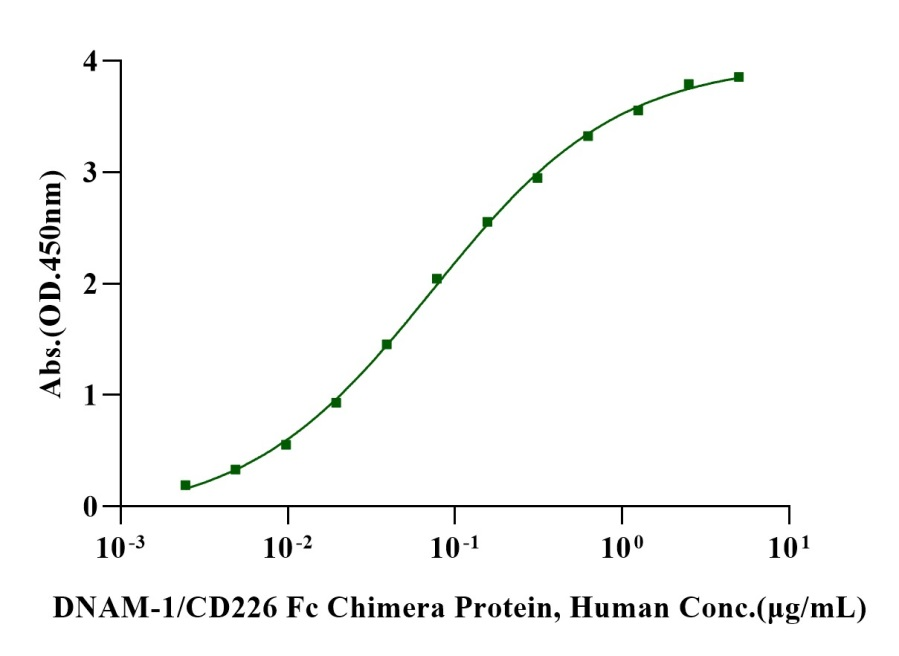Gln32-Leu360, with C-terminal 8*His&Avi tag QDVRVQVLPEVRGQLGGTVELPCHLLPPVPGLYISLVTWQRPDAPANHQNVAAFHPKMGPSFPSPKPGSERLSFVSAKQSTGQDTEAELQDATLALHGLTVEDEGNYTCEFATFPKGSVRGMTWLRVIAKPKNQAEAQKVTFSQDPTTVALCISKEGRPPARISWLSSLDWEAKETQVSGTLAGTVTVTSRFTLVPSGRADGVTVTCKVEHESFEEPALIPVTLSVRYPPEVSISGYDDNWYLGRTDATLSCDVRSNPEPTGYDWSTTSGTFPTSAVAQGSQLVIHAVDSLFNTTFVCTVTNAVGMGRAEQVIFVRETPNTAGAGATGGGGGSGGGSHHHHHHHHGLNDIFEAQKIEWHE
45-54kDa
Reconstitute at 0.1-1 mg/ml according to the size in ultrapure water after rapid centrifugation.
1、Minai-Fleminger Y. et al. (2009) Mast cells and eosinophils: the two key effector cells in allergic inflammation. Inflammation Research. 58(10): 631-638.
Nectin-2, also known as CD112, is a cell adhesion molecule that belongs to the Nectin family. Nectin is highly homologous to human poliovirus receptors and also known as a poliovirus receptor-associated protein. The Nectin family consists of four members: Nectin-1, Nectin-2, Nectin-3, and Nectin-4. Nectin protein had three consecutive immunoglobulin-like domains outside the cell, namely, the Ig-V domain at the N terminal and two Ig-C2 domains at the C terminal. Nectin-2 is found in neurons, endothelial cells, epithelial cells, and fibroblasts. Nectin-2 can bind pseudorabies virus and herpes simplex virus-2 (HSV-2) and participate in the intercellular transmission of these viruses, but cannot bind HSV-1 and has a low binding affinity with TIGIT. Nectin-2 was identified as a ligand for DNAM-1 (CD226), whose CD226/CD112 interaction mediates cytotoxicity and cytokine secretion in T and NK cells.


Immobilized Biotinylated Nectin-2/CD112 His&Avi Tag, Human (Cat. No. UA010352)at 2 μg/mL on Streptavidin precoated (0.5μg/well) plate, can bind DNAM-1/CD226 Fc Chimera Protein, Human (Cat. No. UA010560) with EC50 of 65.11-82.64ng/ml.